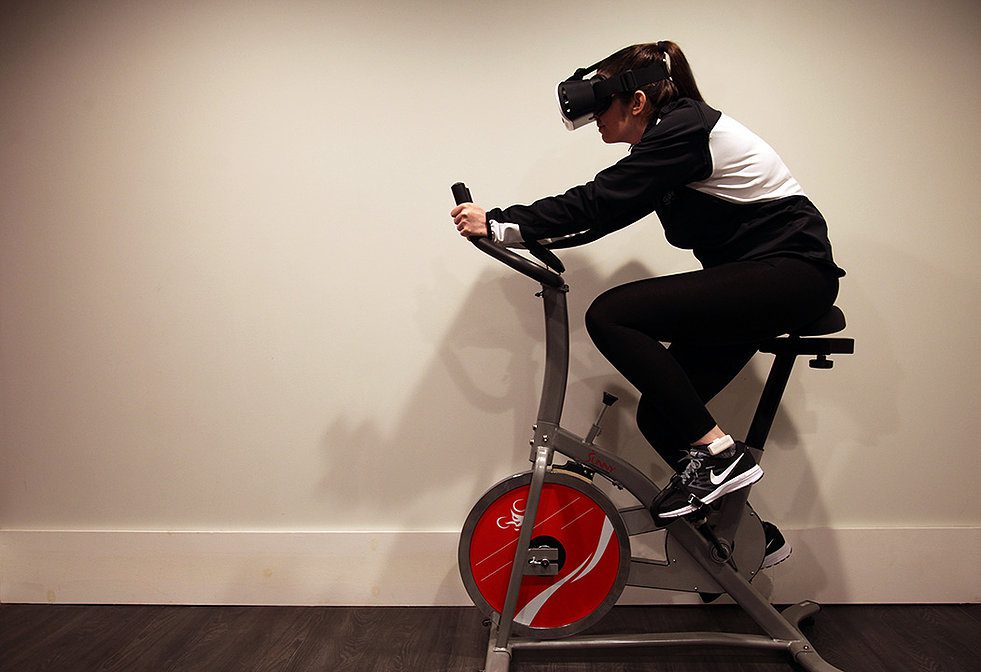Think fitness has no room to evolve? Think again. ukactive is a not for-profit health body and Argos is a leading digital retailer. Earlier this year, they teamed up to commission research for National Fitness Day 2016. The study asked Brits what they expected to see in the realm of fitness in ten years’ time. The findings reveal that they are generally optimistic about the eventual convergence of fitness and technology. While the stereotypical image of the future looks like flying cars and cleaning robots, what exactly did the participants imagine the future of fitness to look like in 2026?
The Virtual Personal Trainer
57 percent of the respondents envision that their home workout will be enhanced by the presence of a personal trainer engaged via TV or computer. If surgeons are able to remotely oversee surgeries through VR now, then we can believe it. Being able to exercise like you’re at the gym despite not leaving home can be an attractive prospect. It removes the barrier of finding time to go to the gym in the first place.
Indeed, the Baroness Tanni Grey-Thomspon, a Paralympic legend and ukactive Chair, said home workouts would make exercise “more accessible.” And the more accessible something is, the more people would be able to engage in it.

WMOR Architects created the above picture depicting the home workout of 2026. The woman is going through a session with her trainer, who is projected up on her wall there. While she is using her own home fitness equipment, she is still able to take advantage of the remote professional’s expertise.
Working Out Alongside the Best
By 2026, about 20 percent of the respondents think that they’ll be able to exercise with their favorite athletes. The idea reminds us of STRIVR, which is training athletes by allowing them to watch replays from the relevant point of view. Although, we wonder what exactly the respondents meant by working out with sports stars. Would the athlete be leading a sort of fitness class? Would users be able to interact with them, in a way similar to Facebook or YouTube broadcasts? An interesting idea would be for athletes to demonstrate their own workouts and go into why they do the exercises they do.
The Future of Fitness in the Gym
66 percent of respondents said the gym was their current way of staying fit. Their vision of the future doesn’t see that changing very much, but the same cannot be said of the nature of the gyms. 38 percent of the respondents pictured using virtual reality to run or cycle world-famous races like the Tour de France. A number of others were looking forward to seeing anti-gravity workout rooms, or a studio that could replicate different weather conditions.

Another image created by WMOR Architects depicts the future gym. In the lower left corner, VR helps conduct a spin class. In the lower right, you can see runners utilizing drones. The aforementioned anti-gravity room is front and center.
Wearing Your Heart on Your Sleeve
Only one in five of the study’s participants wore wearable fitness technology like the FitBit. But in the future, half of the total respondents expect to do workouts customized by trackable data. 40 percent of them envisioned a future where our own clothes logged our movement. This forecast isn’t unreasonable. In the last year, Argos has seen a 200 percent increase in the weekly sales of FitBit.
“A lot of people slip out of their gym routines because life gets in the way,” said Professor Greg Whyte, OBE, “but the advancement of virtual classes and better wearables will help them to keep up the exercise habit and remain engaged.”
With the large steps being taken by VR producers in the fitness industry, it won’t be surprising some of these predictions turn out to be accurate. VR is generally seen as a source of entertainment. But, it’s amazing what VR has done in the interest of health and fitness. Hopefully the future won’t take ten years to get here.











